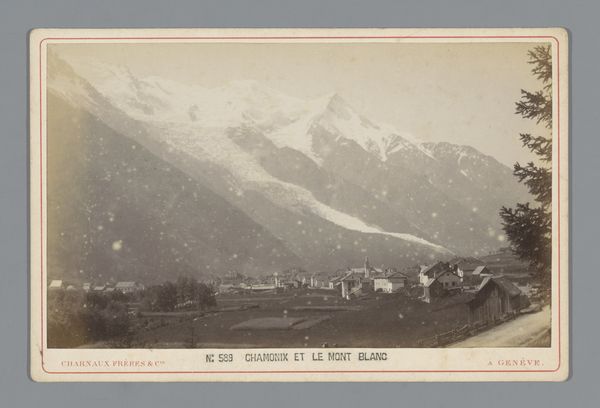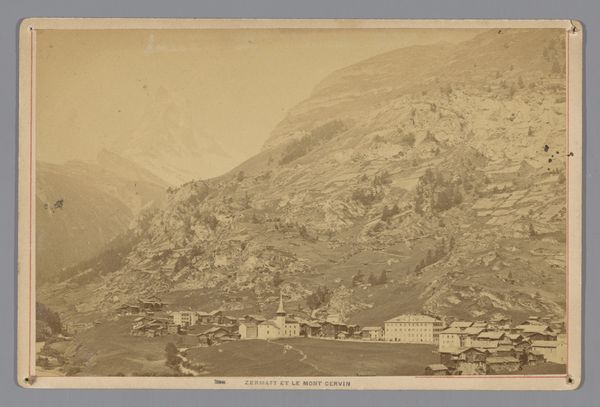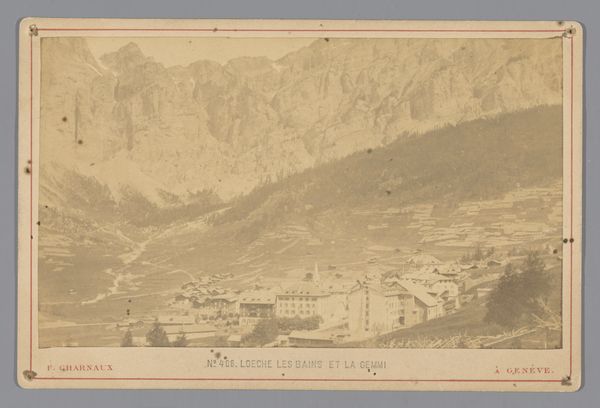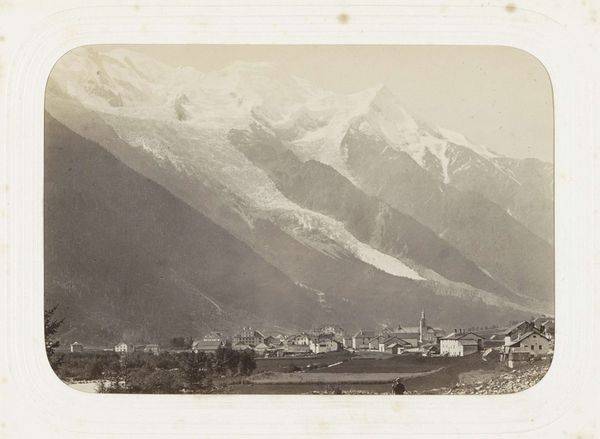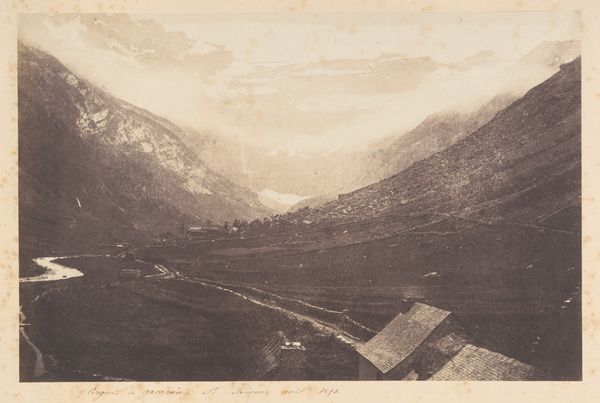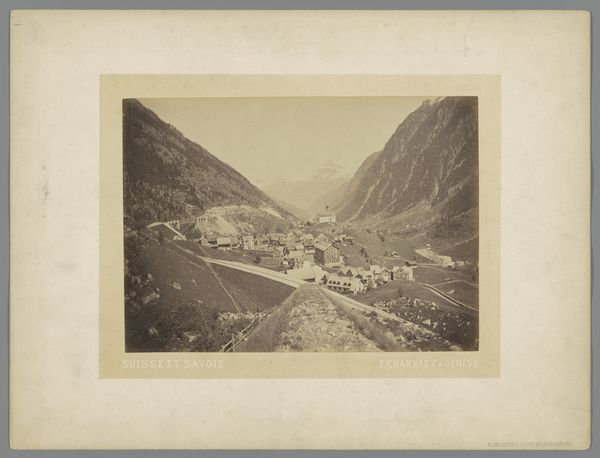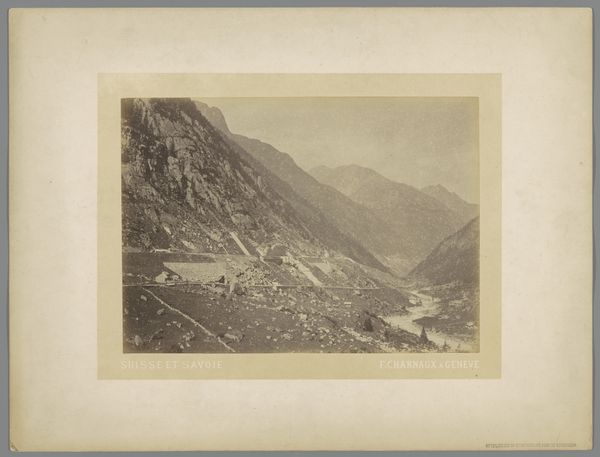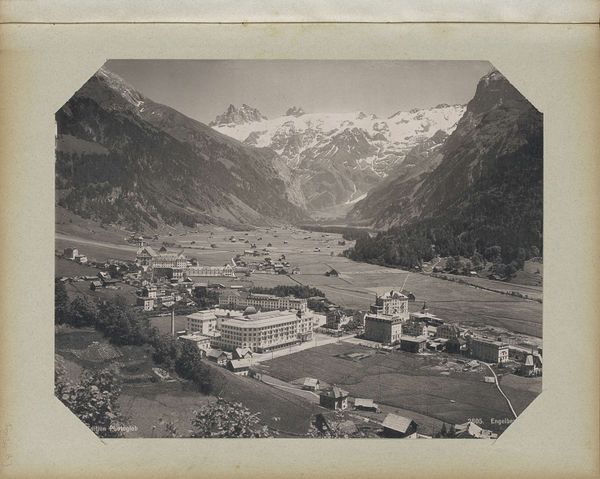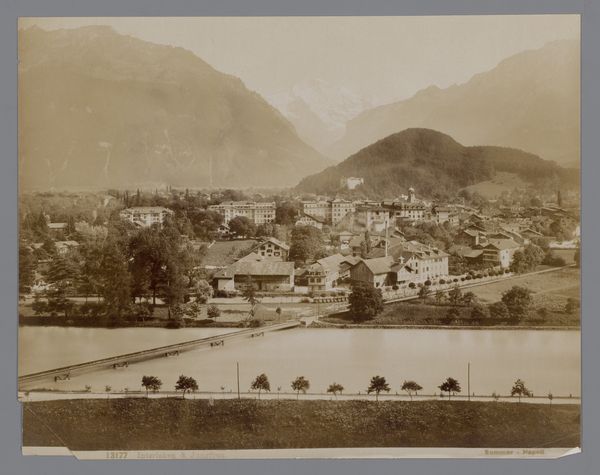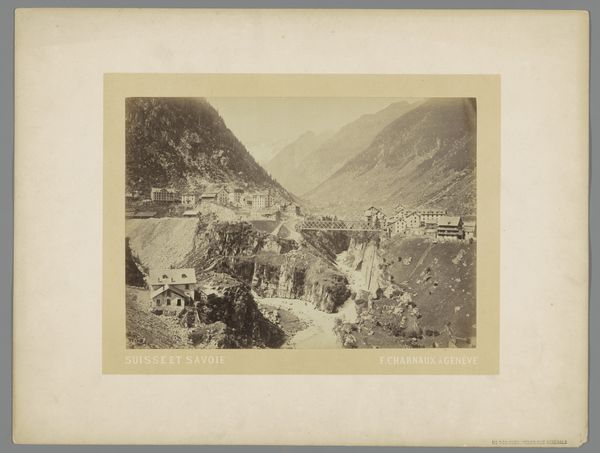
print, photography
# print
#
landscape
#
photography
#
mountain
Dimensions: height 108 mm, width 164 mm
Copyright: Rijks Museum: Open Domain
This photograph of Chamonix with mountains was captured by Florentin Charnaux in the 19th century. The sepia tone betrays the process by which it was made: a laborious process that involved coating a glass plate with light-sensitive emulsion, exposing it in a camera, and then developing the image. What’s so interesting about photography is how the raw materials – the chemicals, the glass – are alchemically transformed through the labour of the photographer. Charnaux must have lugged his equipment up to a suitable vantage point, carefully framing the composition. The resulting print, with its soft focus and warm hues, romanticizes the landscape, turning a Swiss village into a picturesque idyll for the rising middle classes. We might think of this image as merely documentary, but it’s just as much a product of its time as any painting or sculpture. It serves as a reminder of the power of making, to shape our perceptions and desires.
Comments
No comments
Be the first to comment and join the conversation on the ultimate creative platform.
